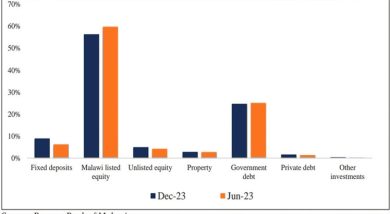Tea output down again
Economic commentators say Malawi should expect continued currency depreciation, exchange rate volatility, rising poverty levels and soaring inflation following dismal performance of main cash crops this year.
They say due to underperformance of tobacco, tea and sugar, the long-term impact on the economy will be a decline in competitiveness and continued reliance on donor support.

recorded in 2010
The comments follow reports that Malawi’s second major forex earner, tea output has been fluctuating over a five-year period.
Malawi tea output has not surpassed a record of 51.5 million kilogrammes (kg) realised in 2010.
A recent Reserve Bank of Malawi (RBM) report shows a 39 percent year-on-year drop of tea proceeds to $2.1 million from $4.4 million realised in the previous year.
Similarly, a National Statistical Office (NSO) monthly statistical bulletin indicates that as at July, total value of tea auctioned at Limbe amounted to K1.03 billion compared to K1.2 billion in the same period in 2014.
Albert Changaya, managing director for Tea Research Foundation Central Africa (TRFCA), a Mulanje-based regional tea research hub for Malawi, Zambia and Zimbabwe, on Tuesday attributed the drop largely to climate change effects, tipping tea growers and policy makers to encourage the use of cultivars that suit their specific conditions.
He noted that tea output is likely to drop again this year due to excess rainfall measuring about 2 300 millimetres, half of which was recorded in January alone, a situation which he described as ‘disastrous’ to the industry.
Said Changaya: “Normally, we receive about 50 millimetres every month, but this was not the case this year. Tea output is usually adversely affected by recurrent extreme temperatures which is making it hard for the old tea varieties to withstand the change; hence, there is need for players in this industry to use tolerant cultivars to address these challenges.”
He said the drought-tolerant cultivars are estimated to increase tea production from the current 2 500 metric tonnes (MT) per hectare to 3 500 MT per hectare.
He further called on government to secure more land for tea cultivation preferably in Chikangawa in Mzimba, saying the foundation seeks in excess of 20 000 hectares to boost production of the crop.
Noting the acute response from the drought-tolerant crops which were released by the foundation earlier this year, he called on other players to start using the cultivars, projecting that they stand a chance of survival and are high yielding.
Malawi is the second biggest producer of tea in Africa after Kenya.
The industry employs between 40 000 and 60 000 people during peak season.





